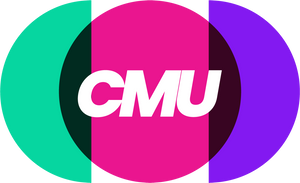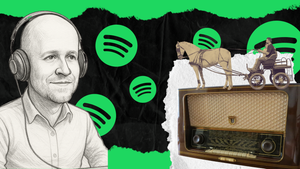Spotify has told Canada’s broadcasting regulator the CRTC that if it seeks to regulate music streaming services in the same way it regulates radio, instead of protecting Canadian music it will “threaten the very mechanisms” that have powered a decade of growth in the country’s record industry.
Rules that govern traditional radio make no sense in streaming, it insists, adding that “regulating Spotify like a radio station is like regulating Uber like a horse and buggy”.
The Canadian Radio-television And Telecommunications Commission is currently implementing Canada’s Online Streaming Act.
That has involved putting in place the new 5% streaming levy that is currently being opposed through the courts by the streaming services, but it also requires the CRTC to work out how to exercise new regulatory powers over online services, in particular to promote the discoverability of Canadian content.
However, Spotify argues, when it comes to music streaming services, no new regulation is required. And on Friday the company’s Director Of Global Music Policy, Xenia Manning, set out the arguments for why the CRTC should leave Spotify well alone during a hearing organised by the regulator.
Before forcing any new rules onto Spotify regarding how it does deals with rightsholders and sign-posts content on its platform, Manning said, it is “essential to assess whether a real problem exists that justifies regulatory intervention”. And the evidence is clear, “there is no market failure in audio streaming”.
When it comes to the “discoverability and promotion” of Canadian music, she said, Spotify delivers “1.3 million hours of daily listening for Canadian artists in Canada” and “15 million hours globally” every single day. That level of reach, she argued, “is unmatched by traditional broadcasters”, and probably any other services regulated by the CRTC.
And Spotify supports Canadian music creators in other ways too, she insisted. It pays over two thirds of its revenues to the music industry, with streaming the biggest revenue generator for record labels and music publishers, who in turn invest in Canadian artists and songwriters. “Streaming royalties are the primary engine for music production and financing by labels and publishers”, Manning explained.
And then there’s Spotify For Artists. “Spotify empowers Canadian artists with free access to audience data, analytics and promotional tools” Manning went on, which helps them “bypass traditional barriers and take control of their careers - we equip all artists with the tools to find success”.
Of course, it’s no secret that - for most new and independent artists - while it’s easy to get your music onto the streaming services, and to access data and analytics, it’s very challenging indeed to find an audience and generate decent streaming income.
However, Manning’s argument is that forcing radio industry style regulation onto Spotify and its competitors - such as content quotas or interventions in licensing deals - won’t help any artists meet those challenges.
A key concern expressed by all the big music streaming companies is that - in its implementation of the Online Streaming Act - the CRTC has not done enough to distinguish between streaming services and traditional broadcasters, and between audio and video streaming platforms.
Which could in turn lead to rules that only make sense for traditional broadcasters - or for video streaming - being applied to audio streaming, despite it operating in a very different way.
Trade body DiMA set out those concerns in a submission to the CRTC in March. It pointed out that, unlike with traditional radio broadcasts, with online content there is no “limited spectrum” and “access to the online universe does not require a licence”.
As a result, it said, “Canadians may access myriad programming via the internet” and no one company “can control the programming available to consumers”.
“Music services are also different from audiovisual streaming services”, DiMA’s submission insisted. Unlike in the video streaming domain, “barriers to entry to produce music content are quite low”, platforms “are generally not content producers”, and the same catalogue of music is “available across competing services”.
Echoing these concerns during last week’s hearing, Manning said, “many proposals in these proceedings treat audio streaming services as if they were traditional broadcasters or video distributors. They are not. The business models are fundamentally different, and regulations designed for one cannot simply be applied to the other".
The Spotify exec then concluded, “Spotify is not like other broadcasters. It’s an amplifier - for every voice, in every corner of Canada. We encourage the CRTC to build on the success of streaming. Let’s protect the future of Canadian music - not through regulation, but through partnership, innovation, and confidence in the power of artists and audiences to connect”.

